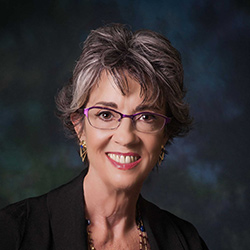CFAR Executive Director Robyn Stone can’t think of one person who thinks elder abuse is acceptable. So why, she asks, does elder abuse still persist today?
I can’t think of one person who thinks elder abuse is acceptable.
So I’m confused.
Why does elder abuse, in all of its varied forms, still persist today? And why don’t we see more public outrage about the fact that 10% of older adults will experience some form abuse during their lifetime?
I’m hoping a new study will change all that by shedding light on how our differing attitudes about elder abuse could be standing in the way of our efforts to eradicate this national scourge.
Researchers at The Frameworks Institute conducted 2 sets of in-depth interviews with people working in the field of aging and with members of the general public. Their study uncovered 2 distinct — and often disconnected — ways of thinking about elder abuse.
People working in the aging field focused on the systemic causes of and solutions for elder abuse. I participated in this group of advocates, policy experts, and researchers. In separate, one-on-one interviews, we agreed that elder abuse is a problem that can be solved through collective action and enlightened public policies aimed at addressing underlying societal issues that can lead to abuse.
The general public felt more fatalistic. During their interviews with researchers, a representative group of Americans tended to see elder abuse as an individual, not a societal problem. They felt that little could be done about elder abuse, beyond better surveillance of individual perpetrators, and education to increase reporting of abuse.
ELDER ABUSE CAUSES AND EFFECTS
Members of my group were all-too-aware that elder abuse has long-lasting effects on the physical, emotional, behavioral, and financial well-being of its victims. Such abuse causes a threefold increase in a victim’s risk of dying within 3 years. And it carries with it a high cost that is often borne by public programs like Medicare and Medicaid.
The causes of elder abuse are complex, but my group identified clear risk factors, that, if addressed early, could help prevent many abuse cases. Factors that increase the likelihood of abuse include:
- Mental health issues, substance abuse, and financial stress among perpetrators.
- Dementia, social isolation, and physical dependency among elders.
In addition – and this is very important – my colleagues identified several underlying social issues that increase the risk for elder abuse. These include lack of caregiver support, and ageist attitudes that portray older adults as deteriorating and dependent.
CREATING A ROADMAP FOR CHANGE
Members of the public are absolutely correct in suggesting that we need more education around elder abuse. They’re also correct in assuming that heightened awareness would increase the chances that individual instances of elder abuse would be recognized and reported, and that perpetrators would be apprehended.
Heightened surveillance is extremely important. But it isn’t nearly enough to help us prevent abuse in the first place. We also need to identify and fix the underlying causes of abuse.
GIVE CAREGIVERS BETTER SUPPORT
The Frameworks report suggests that increased public support for caregiver training, adult day programs, and respite care could go a long way toward relieving the stress that often leads family caregivers to become abusive. It’s just as important to make counseling and other services available to families with a history of conflict and to family members who need mental health and substance abuse services.
In addition, I believe that providers of long-term services and supports (LTSS) have an important role to play. Start by taking a long, hard look at the culture of your workplaces.
- Do workers who provide hands-on care under stressful circumstances receive adequate support, tools, and strategies to help them demonstrate compassion at all times and respond appropriately in difficult situations?
- Does your organization acknowledge the uncomfortable truth that workers themselves are sometimes the victims of abuse from older adults who are living with dementia, or residents who are intolerant of our increasingly diverse workforce?
Increased staff training around preventing abuse — and cultural competency training for older adults — could go a long way toward keeping our care settings abuse free. We need to start paying more attention to both of these issues.
In addition, staff in all care settings could benefit from working on interdisciplinary teams that identify, respond to, and prevent elder abuse. Adult Protective Services investigators, law enforcement officers, and mental health professionals have an important role to play in helping LTSS workers prevent abuse in home and residential care settings.
BRING VICTIMS OUT OF THE SHADOWS
More support for senior centers and other social engagement programs could help prevent the isolation that allows elder abuse to take root and keeps it from being detected by outsiders. In addition, we must work as a society to reduce ageism so older people who are cognitively able will feel empowered to recognize their strengths, stand up against abuse, and advocate for themselves in their families, care settings, and communities.
ELDER ABUSE: REAL AND SOLVABLE
We can’t rest until every American understands that our elder abuse crisis is real, and that it can be solved.
I’m not saying this will be easy. It will require that every American take personal responsibility for eradicating elder abuse for the good of our entire society.
It will also require that we all come together to support public policies that address abuse’s underlying causes, and take steps to empower older adults, strengthen their families, and support their caregivers.

Robyn I. Stone, DrPH, is senior vice president of research at LeadingAge, and co-director of the LeadingAge LTSS Center @UMass Boston. Her widely published work addresses long-term care policy and quality, chronic care for people with disabilities, the aging services workforce, affordable senior housing, and family caregiving.
